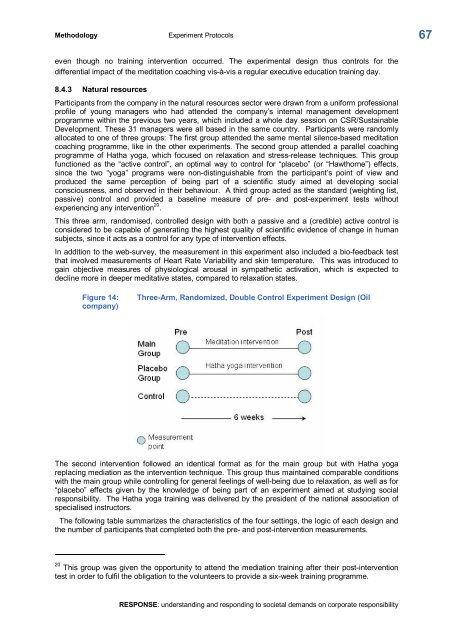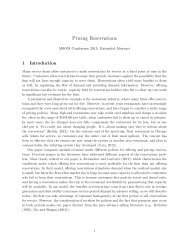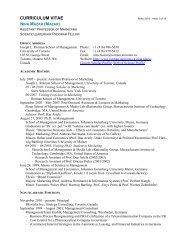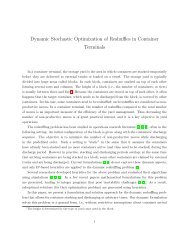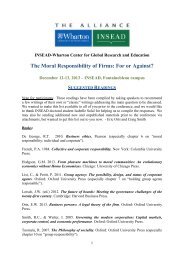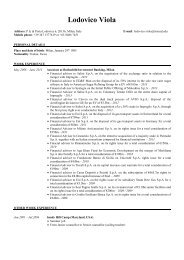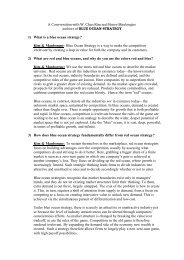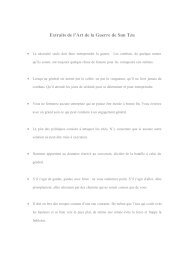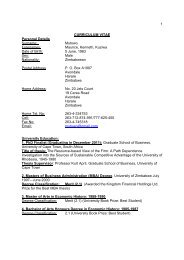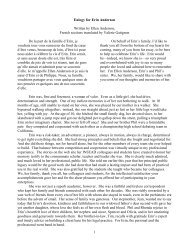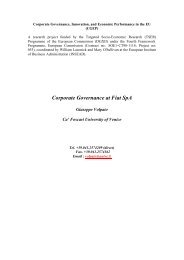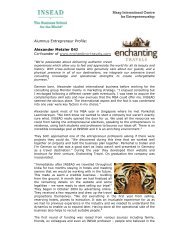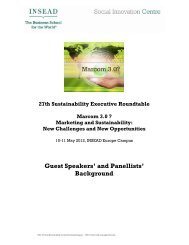RESPONSE - Insead
RESPONSE - Insead
RESPONSE - Insead
You also want an ePaper? Increase the reach of your titles
YUMPU automatically turns print PDFs into web optimized ePapers that Google loves.
Methodology Experiment Protocols<br />
even though no training intervention occurred. The experimental design thus controls for the<br />
differential impact of the meditation coaching visàvis a regular executive education training day.<br />
8.4.3 Natural resources<br />
Participants from the company in the natural resources sector were drawn from a uniform professional<br />
profile of young managers who had attended the company’s internal management development<br />
programme within the previous two years, which included a whole day session on CSR/Sustainable<br />
Development. These 31 managers were all based in the same country. Participants were randomly<br />
allocated to one of three groups: The first group attended the same mental silencebased meditation<br />
coaching programme, like in the other experiments. The second group attended a parallel coaching<br />
programme of Hatha yoga, which focused on relaxation and stressrelease techniques. This group<br />
functioned as the “active control”, an optimal way to control for “placebo” (or “Hawthorne”) effects,<br />
since the two “yoga” programs were nondistinguishable from the participant’s point of view and<br />
produced the same perception of being part of a scientific study aimed at developing social<br />
consciousness, and observed in their behaviour. A third group acted as the standard (weighting list,<br />
passive) control and provided a baseline measure of pre and postexperiment tests without<br />
experiencing any intervention 20 .<br />
This three arm, randomised, controlled design with both a passive and a (credible) active control is<br />
considered to be capable of generating the highest quality of scientific evidence of change in human<br />
subjects, since it acts as a control for any type of intervention effects.<br />
In addition to the websurvey, the measurement in this experiment also included a biofeedback test<br />
that involved measurements of Heart Rate Variability and skin temperature. This was introduced to<br />
gain objective measures of physiological arousal in sympathetic activation, which is expected to<br />
decline more in deeper meditative states, compared to relaxation states.<br />
Figure 14: ThreeArm, Randomized, Double Control Experiment Design (Oil<br />
company)<br />
The second intervention followed an identical format as for the main group but with Hatha yoga<br />
replacing mediation as the intervention technique. This group thus maintained comparable conditions<br />
with the main group while controlling for general feelings of wellbeing due to relaxation, as well as for<br />
“placebo” effects given by the knowledge of being part of an experiment aimed at studying social<br />
responsibility. The Hatha yoga training was delivered by the president of the national association of<br />
specialised instructors.<br />
The following table summarizes the characteristics of the four settings, the logic of each design and<br />
the number of participants that completed both the pre and postintervention measurements.<br />
20 This group was given the opportunity to attend the mediation training after their postintervention<br />
test in order to fulfil the obligation to the volunteers to provide a sixweek training programme.<br />
<strong>RESPONSE</strong>: understanding and responding to societal demands on corporate responsibility<br />
67


